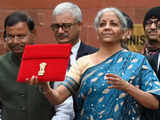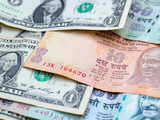Suggest a new Definition
Proposed definitions will be considered for inclusion in the Economictimes.com
Economy
What is 'Economics'
Economics
Economics is the study of scarcity and how it affects the use of resources, the production of goods and services, the growth of production and well-being over time, and many other important and complicated issues that affect society.
What is economics all about?
Economics is the study of how things are made, moved around, and used. It looks at how people, businesses, governments, and countries choose to use their resources. Economics is the study of how people act, based on the idea that people act rationally and try to get the most value or benefit. Economics is the study of how work and business are run. Since there are many ways to use human labour and many ways to get resources, it is the job of economics to figure out which ways produce the best results.
In general, economics can be broken into two parts: macroeconomics, which looks at how the economy works, and microeconomics, which looks at how people and businesses work.
Varieties of Economics
There are two main ways to learn about economics.
A person, a family, a business, a group, or the government can all make decisions independently. Microeconomics looks at different parts of human behaviour to figure out how people react to changes in prices and why they want certain things at certain prices. Microeconomics tries to explain why and how different things have different values, how people make financial decisions, and how they can trade, work together, and cooperate in the best way. Microeconomics looks at how supply and demand change over time and how well things are made, and how much they cost. It also looks at how people divide and share work, set up and run businesses, and deal with uncertainty, risk, and strategic game theory.
Macroeconomics looks at the economy as a whole, both nationally and globally. It does this by simulating the economy with a lot of data and variables from the economy. It could be a certain part of the world, a country, a continent, or the whole world. It mostly looks at how economies grow, change, and go through cycles. Foreign trade, government fiscal and monetary policy, unemployment rates, inflation and interest rates, the growth of total production output as shown by changes in Gross Domestic Product (GDP), and business cycles that cause expansions, booms, and recessions are all looked at.
There is a connection between microeconomics and macroeconomics. The sum of all microeconomic events makes up an aggregate macroeconomic event. But these two areas of economics use very different theories, models, and research methods that can make them seem to go against each other. Many economists study how to put together the basics of microeconomics with macroeconomics into theory and research.
Economic Indicators
Economic indicators show how a country's economy is doing in a specific area. When government agencies or private groups put out these reports regularly, they usually have a big effect on the stock, fixed income, and foreign exchange markets. They can also help investors figure out how the economy will affect markets and make decisions about investments.
Gross national product (GDP)
Many people think that a country's gross domestic product (GDP) is the best way to measure how well its economy is doing. It is the total market value of all finished goods and services made in a country during a certain year or other time period. The Bureau of Economic Analysis (BEA) releases a monthly report at the end of each month. Many investors, analysts, and traders pay attention to the advance GDP report and the preliminary report, which come out a few months before the annual GDP report.
Retail sales
The Department of Commerce (DOC) puts out a report on retail sales in the middle of each month. This report measures the total amount of money made or the dollar value of all products sold in stores.
Using sample data from stores across the country, the report figures out how many products were sold, which is a good indicator of how much money people are spending.
Industrial manufacturing
The Federal Reserve puts out a report every month called "Industrial Production" that shows how the production of U.S. factories, mines, and utilities has changed over time. One of the closely watched variables in this study is the capacity utilisation ratio, which shows how much of the economy's productive capacity is being used instead of sitting idle. A country should see its production values increase and its capacity is used to its fullest.
Employment Data
The Bureau of Labor Statistics (BLS) reports "nonfarm payrolls" every first Friday of the month with information about jobs.
Most of the time, a strong economy means that jobs are being added quickly. In the same way, big drops could mean that contractions are coming. Even though these are broad trends, it is important to look at how the economy is doing.
Changes in prices for consumers (CPI)
The Consumer Price Index (CPI), which the BLS also puts out, is the standard way to measure inflation. It shows how much retail prices (consumer costs) have changed. The CPI compares price changes from month to month and from year to year by putting goods and services from the economy into a basket.
Which kinds of economies are there?
There are four main types of economic systems: traditional, command, mixed, and market.
What kinds of economics are there?
The two main parts of economics are microeconomics and macroeconomics.
What is the most important economic problem right now?
In economics, the main problem is that there are only so many resources and so many wants. Economics has also shown that people can't get everything they want. As time goes on, the more our needs are met, the more we want.
Disclaimer: This content is authored by an external agency. The views expressed here are that of the respective authors/ entities and do not represent the views of Economic Times (ET). ET does not guarantee, vouch for or endorse any of its contents nor is responsible for them in any manner whatsoever. Please take all steps necessary to ascertain that any information and content provided is correct, updated and verified. ET hereby disclaims any and all warranties, express or implied, relating to the report and any content therein.
Economics is the study of scarcity and how it affects the use of resources, the production of goods and services, the growth of production and well-being over time, and many other important and complicated issues that affect society.
What is economics all about?
Economics is the study of how things are made, moved around, and used. It looks at how people, businesses, governments, and countries choose to use their resources. Economics is the study of how people act, based on the idea that people act rationally and try to get the most value or benefit. Economics is the study of how work and business are run. Since there are many ways to use human labour and many ways to get resources, it is the job of economics to figure out which ways produce the best results.
In general, economics can be broken into two parts: macroeconomics, which looks at how the economy works, and microeconomics, which looks at how people and businesses work.
Varieties of Economics
There are two main ways to learn about economics.
A person, a family, a business, a group, or the government can all make decisions independently. Microeconomics looks at different parts of human behaviour to figure out how people react to changes in prices and why they want certain things at certain prices. Microeconomics tries to explain why and how different things have different values, how people make financial decisions, and how they can trade, work together, and cooperate in the best way. Microeconomics looks at how supply and demand change over time and how well things are made, and how much they cost. It also looks at how people divide and share work, set up and run businesses, and deal with uncertainty, risk, and strategic game theory.
Macroeconomics looks at the economy as a whole, both nationally and globally. It does this by simulating the economy with a lot of data and variables from the economy. It could be a certain part of the world, a country, a continent, or the whole world. It mostly looks at how economies grow, change, and go through cycles. Foreign trade, government fiscal and monetary policy, unemployment rates, inflation and interest rates, the growth of total production output as shown by changes in Gross Domestic Product (GDP), and business cycles that cause expansions, booms, and recessions are all looked at.
There is a connection between microeconomics and macroeconomics. The sum of all microeconomic events makes up an aggregate macroeconomic event. But these two areas of economics use very different theories, models, and research methods that can make them seem to go against each other. Many economists study how to put together the basics of microeconomics with macroeconomics into theory and research.
Economic Indicators
Economic indicators show how a country's economy is doing in a specific area. When government agencies or private groups put out these reports regularly, they usually have a big effect on the stock, fixed income, and foreign exchange markets. They can also help investors figure out how the economy will affect markets and make decisions about investments.
Gross national product (GDP)
Many people think that a country's gross domestic product (GDP) is the best way to measure how well its economy is doing. It is the total market value of all finished goods and services made in a country during a certain year or other time period. The Bureau of Economic Analysis (BEA) releases a monthly report at the end of each month. Many investors, analysts, and traders pay attention to the advance GDP report and the preliminary report, which come out a few months before the annual GDP report.
Retail sales
The Department of Commerce (DOC) puts out a report on retail sales in the middle of each month. This report measures the total amount of money made or the dollar value of all products sold in stores.
Using sample data from stores across the country, the report figures out how many products were sold, which is a good indicator of how much money people are spending.
Industrial manufacturing
The Federal Reserve puts out a report every month called "Industrial Production" that shows how the production of U.S. factories, mines, and utilities has changed over time. One of the closely watched variables in this study is the capacity utilisation ratio, which shows how much of the economy's productive capacity is being used instead of sitting idle. A country should see its production values increase and its capacity is used to its fullest.
Employment Data
The Bureau of Labor Statistics (BLS) reports "nonfarm payrolls" every first Friday of the month with information about jobs.
Most of the time, a strong economy means that jobs are being added quickly. In the same way, big drops could mean that contractions are coming. Even though these are broad trends, it is important to look at how the economy is doing.
Changes in prices for consumers (CPI)
The Consumer Price Index (CPI), which the BLS also puts out, is the standard way to measure inflation. It shows how much retail prices (consumer costs) have changed. The CPI compares price changes from month to month and from year to year by putting goods and services from the economy into a basket.
Which kinds of economies are there?
There are four main types of economic systems: traditional, command, mixed, and market.
What kinds of economics are there?
The two main parts of economics are microeconomics and macroeconomics.
What is the most important economic problem right now?
In economics, the main problem is that there are only so many resources and so many wants. Economics has also shown that people can't get everything they want. As time goes on, the more our needs are met, the more we want.
Disclaimer: This content is authored by an external agency. The views expressed here are that of the respective authors/ entities and do not represent the views of Economic Times (ET). ET does not guarantee, vouch for or endorse any of its contents nor is responsible for them in any manner whatsoever. Please take all steps necessary to ascertain that any information and content provided is correct, updated and verified. ET hereby disclaims any and all warranties, express or implied, relating to the report and any content therein.
Related News
 Can Nirmala Sitharaman blend good economics with shrewd politics?As NDA 3.0 prepares for the upcoming budget, Finance Minister Nirmala Sitharaman faces the task of balancing economic growth with political demands. Strong economic indicators allow for potential tax relief for the middle class and increased welfare spending.
Can Nirmala Sitharaman blend good economics with shrewd politics?As NDA 3.0 prepares for the upcoming budget, Finance Minister Nirmala Sitharaman faces the task of balancing economic growth with political demands. Strong economic indicators allow for potential tax relief for the middle class and increased welfare spending. Can Nirmala Sitharaman blend good economics with shrewd politics?As NDA 3.0 prepares for the upcoming budget, Finance Minister Nirmala Sitharaman faces the task of balancing economic growth with political demands. Strong economic indicators allow for potential tax relief for the middle class and increased welfare spending.
Can Nirmala Sitharaman blend good economics with shrewd politics?As NDA 3.0 prepares for the upcoming budget, Finance Minister Nirmala Sitharaman faces the task of balancing economic growth with political demands. Strong economic indicators allow for potential tax relief for the middle class and increased welfare spending.  Government of Meghalaya recognizes best performing young farmers with awards and seed-moneyThe Department of Agriculture & Farmers’ Welfare in Meghalaya awarded cash prizes to eight Best Performing candidates under the 'Training of Rural Educated Youth for Self-Employment on Farm-Based Activities' (TREYSEFA) program. The Minister for Agriculture, Mazel Ampareen Lyngdoh, commended the candidates and highlighted the importance of supporting farmers. Maqbool Suiam, the Principal of BATC, praised the program and its impact on rural youth.
Government of Meghalaya recognizes best performing young farmers with awards and seed-moneyThe Department of Agriculture & Farmers’ Welfare in Meghalaya awarded cash prizes to eight Best Performing candidates under the 'Training of Rural Educated Youth for Self-Employment on Farm-Based Activities' (TREYSEFA) program. The Minister for Agriculture, Mazel Ampareen Lyngdoh, commended the candidates and highlighted the importance of supporting farmers. Maqbool Suiam, the Principal of BATC, praised the program and its impact on rural youth. Transformative agricultural technologies could accelerate sustainable development in Bihar, finds Cornell University studyThe Tata-Cornell Institute for Agriculture and Nutrition (TCI) at Cornell University has found that Bihar can significantly reduce greenhouse gas emissions associated with rice and livestock production while maintaining or even improving productivity. The research, part of TCI's Zero-Hunger, Zero-Carbon Food Systems project, aims to create a roadmap for reducing agricultural emissions in Bihar without sacrificing productivity.
Transformative agricultural technologies could accelerate sustainable development in Bihar, finds Cornell University studyThe Tata-Cornell Institute for Agriculture and Nutrition (TCI) at Cornell University has found that Bihar can significantly reduce greenhouse gas emissions associated with rice and livestock production while maintaining or even improving productivity. The research, part of TCI's Zero-Hunger, Zero-Carbon Food Systems project, aims to create a roadmap for reducing agricultural emissions in Bihar without sacrificing productivity. A 1°C rise in global temperature causes a 12% decline in world GDP: Adrien BilalAdrien Bilal discusses the macroeconomic impacts of global temperature rises in the Anthropocene with Srijana Mitra Das at Harvard University.
A 1°C rise in global temperature causes a 12% decline in world GDP: Adrien BilalAdrien Bilal discusses the macroeconomic impacts of global temperature rises in the Anthropocene with Srijana Mitra Das at Harvard University. Politics may be fluid, but economics is still solid. Time to be somewhat greedy: Raamdeo AgrawalPost-election, Nifty dropped reacting to exit polls. BJP leads with NDA's mandate for the third government, promising development reforms. PM Modi targets a developed India by 2047 with positive economic indicators like RBI rate cuts, good monsoons, and FIIs re-entry.
Politics may be fluid, but economics is still solid. Time to be somewhat greedy: Raamdeo AgrawalPost-election, Nifty dropped reacting to exit polls. BJP leads with NDA's mandate for the third government, promising development reforms. PM Modi targets a developed India by 2047 with positive economic indicators like RBI rate cuts, good monsoons, and FIIs re-entry. Rupee falls on month-end dollar demand; election results in focusThe Indian rupee declined on Friday, pressured by month-end dollar demand from importers, with investors awaiting the outcome of the country's general elections for fresh cues.
Rupee falls on month-end dollar demand; election results in focusThe Indian rupee declined on Friday, pressured by month-end dollar demand from importers, with investors awaiting the outcome of the country's general elections for fresh cues. It's also the journey, not just destinationReaching this figure would have taken a whole year to achieve about a decade ago. Annual data for remittances reveals a significant rise in overseas travel spending, which reached $17 bn in FY24, an increase of more than 24.5% over the $13.6 bn in the previous year. In comparison, India's inbound tourism earnings in 2023 were $28.07 bn.
It's also the journey, not just destinationReaching this figure would have taken a whole year to achieve about a decade ago. Annual data for remittances reveals a significant rise in overseas travel spending, which reached $17 bn in FY24, an increase of more than 24.5% over the $13.6 bn in the previous year. In comparison, India's inbound tourism earnings in 2023 were $28.07 bn. Quality of life better in Kochi, Thrissur as compared to major Indian cities like Delhi, Mumbai, Bengaluru, and Hyderabad: Oxford IndexIn terms of factors such as livability and attractiveness influencing migration patterns, major cities like Mumbai, Delhi, and Bengaluru have scored lower than Kochi and Thrissur, according to the Oxford Economics Global Cities Index. The Quality of Life category evaluates indicators measuring the advantages of residing in each city and residents' well-being, encompassing financial and health outcomes, as well as access to amenities. Mumbai, the financial capital of India, ranked 915, while the national capital, Delhi, secured the 838th position. Bengaluru, known as the IT hub, was rated at 847, while Hyderabad received a score of 882.
Quality of life better in Kochi, Thrissur as compared to major Indian cities like Delhi, Mumbai, Bengaluru, and Hyderabad: Oxford IndexIn terms of factors such as livability and attractiveness influencing migration patterns, major cities like Mumbai, Delhi, and Bengaluru have scored lower than Kochi and Thrissur, according to the Oxford Economics Global Cities Index. The Quality of Life category evaluates indicators measuring the advantages of residing in each city and residents' well-being, encompassing financial and health outcomes, as well as access to amenities. Mumbai, the financial capital of India, ranked 915, while the national capital, Delhi, secured the 838th position. Bengaluru, known as the IT hub, was rated at 847, while Hyderabad received a score of 882. CCI to boost strength for better oversight of digital, other sectorsThe regulator is firming up a proposal to enhance its strength to strictly enforce regulations under the amended competition law of 2023, which has significantly widened the scope for oversight. On top of this, it is also planning to bolster its oversight of the digital market by adding quality manpower should the government come out with a new digital competition law and give it the oversight responsibility, said the person.
CCI to boost strength for better oversight of digital, other sectorsThe regulator is firming up a proposal to enhance its strength to strictly enforce regulations under the amended competition law of 2023, which has significantly widened the scope for oversight. On top of this, it is also planning to bolster its oversight of the digital market by adding quality manpower should the government come out with a new digital competition law and give it the oversight responsibility, said the person.
Load More